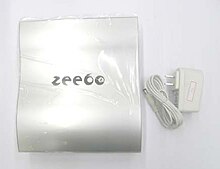
The Master System is an 8-bit third-generation home video game console manufactured and developed by Sega. It was originally a remodeled export version of the Sega Mark III, the third iteration of the SG-1000 series of consoles, which was released in Japan in 1985 with graphical capabilities over its predecessors. The Master System launched in North America in 1986, followed by Europe in 1987, and then in Brazil and Korea in 1989. A Japanese version of the Master System was also launched in 1987, which features a few enhancements over the export models : a built-in FM audio chip, a rapid-fire switch, and a dedicated port for the 3D glasses. The Master System II, a cheaper model, was released in 1990 in North America, Australasia and Europe.
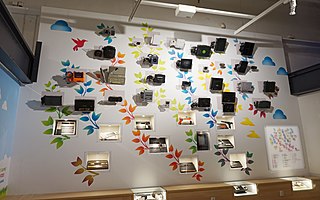
A home video game console is a video game console that is designed to be connected to a display device, such as a television, and an external power source as to play video games. Home consoles are generally less powerful and customizable than personal computers, designed to have advanced graphics abilities but limited memory and storage space to keep the units affordable. While initial consoles were dedicated units with only a few games fixed into the electronic circuits of the system, most consoles since support the use of swappable game media, either through game cartridges, optical discs, or through digital distribution to internal storage.

Binary Runtime Environment for Wireless was an application development platform created by Qualcomm, originally for code division multiple access (CDMA) mobile phones, featuring third-party applications such as mobile games. It was offered in some feature phones but not in smartphones. First developed in 1999, as a platform for wireless applications on CDMA-based mobile phones, it debuted in September 2001. As a software platform that can download and run small programs for playing games, sending messages, and sharing photos, the main advantage of Brew MP was that the application developers can easily port their applications among all Brew MP devices by providing a standardized set of application programming interfaces. Software for Brew MP enabled handsets can be developed in C or C++ using the freely downloadable Brew MP software development kit (SDK). The BREW runtime library is part of the wireless device on-chip firmware or operating system to allow programmers to develop applications without needing to code for system interface or understand wireless applications. BREW is described as a pseudo operating system, but not a true mobile operating system. BREW was not a virtual machine such as Java ME, but it runs a native code.

The Genesis, also known as the Mega Drive outside North America, is a 16-bit fourth generation home video game console developed and sold by Sega. It was Sega's third console and the successor to the Master System. Sega released it in 1988 in Japan as the Mega Drive, and in 1989 in North America as the Genesis. In 1990, it was distributed as the Mega Drive by Virgin Mastertronic in Europe, Ozisoft in Australasia, and Tectoy in Brazil. In South Korea, it was distributed by Samsung Electronics as the Super Gam*Boy and later the Super Aladdin Boy.
Tec Toy S.A., trading as Tectoy since late 2007, is a Brazilian toy and electronics company headquartered in São Paulo. It is best known for producing, publishing, and distributing Sega consoles and video games in Brazil. The company was founded by Daniel Dazcal, Leo Kryss, and Abe Kryss in 1987 because Dazcal saw an opportunity to develop a market for electronic toys and video games, product categories that competitors did not sell in Brazil at the time. The company stock is traded on the Bovespa.
The Xbox 360 launch marked the release of the first high-profile seventh generation video game console. It was Microsoft's second foray in console development succeeding their 2001 launch of the original Xbox.
The Xbox 360 is a home video game console developed by Microsoft. As the successor to the original Xbox, it is the second console in the Xbox series. It competed with Sony's PlayStation 3 and Nintendo's Wii as part of the seventh generation of video game consoles. It was officially unveiled on MTV on May 12, 2005, with detailed launch and game information announced later that month at the 2005 Electronic Entertainment Expo (E3).

The PlayStation Store is a digital media store available to users of Sony's PlayStation 3, PlayStation Vita, PlayStation 4 and PlayStation 5 game consoles via the PlayStation Network.
PlayStation is a video gaming brand that consists of five home video game consoles, two handhelds, a media center, and a smartphone, as well as an online service and multiple magazines. The brand is produced by Sony Interactive Entertainment, a division of Sony.

The Nintendo DSi is a dual-screen handheld game console released by Nintendo. The console launched in Japan on November 1, 2008, and worldwide beginning in April 2009. It is the third iteration of the Nintendo DS, and its primary market rival was Sony's PlayStation Portable (PSP). The fourth iteration, entitled Nintendo DSi XL, is a larger model that launched in Japan on November 21, 2009, and worldwide beginning in March 2010. Development of the DSi began in late 2006, and the handheld was unveiled during an October 2008 Nintendo conference in Tokyo. Consumer demand convinced Nintendo to produce a slimmer handheld with larger screens than the DS Lite. Consequently, Nintendo removed the Game Boy Advance (GBA) cartridge slot to improve portability without sacrificing durability.
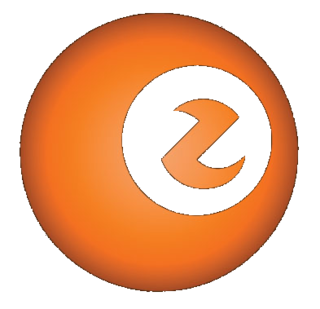
Zeebo Inc. was an American consumer electronics company and creator of the Zeebo entertainment and education system. Designed for "emerging markets" in countries such as Brazil, Mexico, India and China, the Zeebo system runs videogames and other interactive content delivered via wireless 3G digital distribution. This approach is intended to thwart piracy and reduce the cost of content. The system also enables wireless Internet access for web browsing, email and social networking. The Zeebo was sold throughout Brazil and Mexico, and the company has discussed the possibility of future product introductions elsewhere in Latin America, in India, China and Russia.

A smartbook was a class of mobile device that combined certain features of both a smartphone and netbook computer, produced between 2009 and 2010. Smartbooks were advertised with features such as always on, all-day battery life, 3G, or Wi-Fi connectivity and GPS in a laptop or tablet-style body with a screen size of 5 to 10 inches and a physical or soft touchscreen keyboard.
Zeebo Extreme is a series of 3D racing videogames created for the Zeebo system. The games were developed by the Tectoy Digital studio in Campinas, Brazil. To date, five Zeebo Extreme games have been introduced in Brazil and four in Mexico.
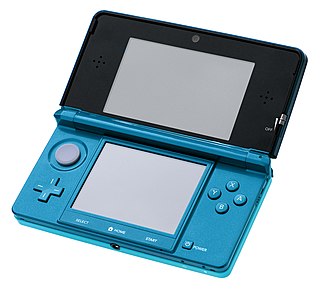
The Nintendo 3DS is a foldable handheld game console produced by Nintendo. The console was announced in March 2010 and unveiled at E3 2010 as the successor to the Nintendo DS. The system features backward compatibility with Nintendo DS video games. As an eighth-generation console, its primary competitor was Sony's PlayStation Vita.
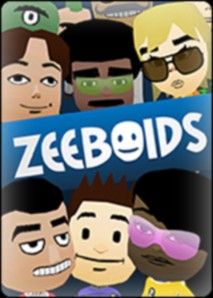
Zeeboids is an avatar creation application developed by Zeebo Interactive Studios in Brazil and released exclusively for the Zeebo system. Zeeboids is compatible with Zeebo Football Club (F.C.) games such as Zeebo F.C. Foot Camp, enabling players to create custom characters ("avatars") and participate in online rankings.
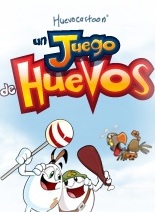
Un Juego de Huevos is a 2D platform videogame, created exclusively for the Zeebo system by Swedish studio Fabrication Games. It is the first videogame based on Una Película de Huevos, the hit movie from the Mexican animation company Huevocartoon. The game was released on April 19, 2010, in Mexico. A version with Portuguese text was released in Brazil in August, 2010, under the title Um Jogo de Ovos.
Skifta was a media shifting service developed by Qualcomm Atheros. It enabled Android and Apple (IOS) smartphone and tablet users to access their music, pictures, and videos from their phone, from cloud media services or remotely from another location via a smart mobile device. The user could then stream media to connected consumer electronics anywhere that supports DLNA and UPnP standards over WiFi or 3G networks.

Xbox is a video gaming brand that consists of five home video game consoles, as well as applications (games), streaming service Xbox Cloud Gaming, and online services such as the Xbox network and Xbox Game Pass. The brand is produced by Microsoft Gaming, a division of Microsoft.
